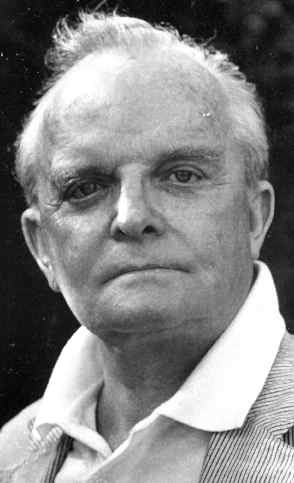
“I’m not a saint yet. I’m an alcoholic. I’m a drug addict. I’m a homosexual. I’m a genius. Of course, I could be all four of these dubious things and still be a saint,” Capote said in a self-interview (Krebs). Capote was a physically odd person, very effeminate in both physique and manner; he spent his entire life trying to prove himself through his writing. His early work exposed through his characters the feelings of isolation and abandonment that he faced when he was growing up. Later, his characters revealed his dream of being accepted into the upper class, then, his rise and fall from grace and finally his return to isolation and near insanity due to drug abuse. Truman Capote is known for his tales of the idle rich and their counterparts, the poor unintelligent southern lower class. In his own lifetime, Capote experienced both life styles. His climb up the social ladder and his ultimate rejection from the upper class is reflected in many of his stories. Though the names had been changed, and the stories slightly spiced up, his characters were instantly recognized; a fact which outraged his social companions who immediately ejected him from their social circle. Capote’s stories portray themes of isolation, deception, contradictions between the classes and later insanity all of which were subjects directly from Capote’s life as well.
Despite seemingly vast differences in style, genre and form, it is the underlying connection between fact and fantasy existing in all of Capote’s stories that make them so intriguing. This blend of fact and fiction was Capote’s claim to fame as well as the catalyst of his self-destruction. One cannot truly understand the meanings of Capote’s works without first having some knowledge of his life because of the omnipresence of his own experiences and emotions in his works. Capote’s life is a part of every story, from “A Christmas Memory” to “A Tree of Night,” Breakfast at Tiffany’s and even In Cold Blood. Capote used his writing first to discover and explain himself, then to plead for the acceptance of others, as his ladder to fame and fortune, and ironically as his slide into self-destruction. Without his writing, the abandoned awkward boy from the South would never have had his prayers answered.
I would recommend most of the stories that I read; however, to those who have not read it yet, Breakfast at Tiffany’s is an absolute must. Unfortunately, I was not able to use this story in my paper because it is a novella rather than a short story. Breakfast at Tiffany’s, like many of Capote’s other works is drawn from his own experiences and it is extremely interesting to look for signs of Capote in each of his characters. (WW S)
Despite seemingly vast differences in style, genre and form, it is the underlying connection between fact and fantasy existing in all of Capote’s stories that make them so intriguing. This blend of fact and fiction was Capote’s claim to fame as well as the catalyst of his self-destruction. One cannot truly understand the meanings of Capote’s works without first having some knowledge of his life because of the omnipresence of his own experiences and emotions in his works. Capote’s life is a part of every story, from “A Christmas Memory” to “A Tree of Night,” Breakfast at Tiffany’s and even In Cold Blood. Capote used his writing first to discover and explain himself, then to plead for the acceptance of others, as his ladder to fame and fortune, and ironically as his slide into self-destruction. Without his writing, the abandoned awkward boy from the South would never have had his prayers answered.
I would recommend most of the stories that I read; however, to those who have not read it yet, Breakfast at Tiffany’s is an absolute must. Unfortunately, I was not able to use this story in my paper because it is a novella rather than a short story. Breakfast at Tiffany’s, like many of Capote’s other works is drawn from his own experiences and it is extremely interesting to look for signs of Capote in each of his characters. (WW S)
No comments:
Post a Comment